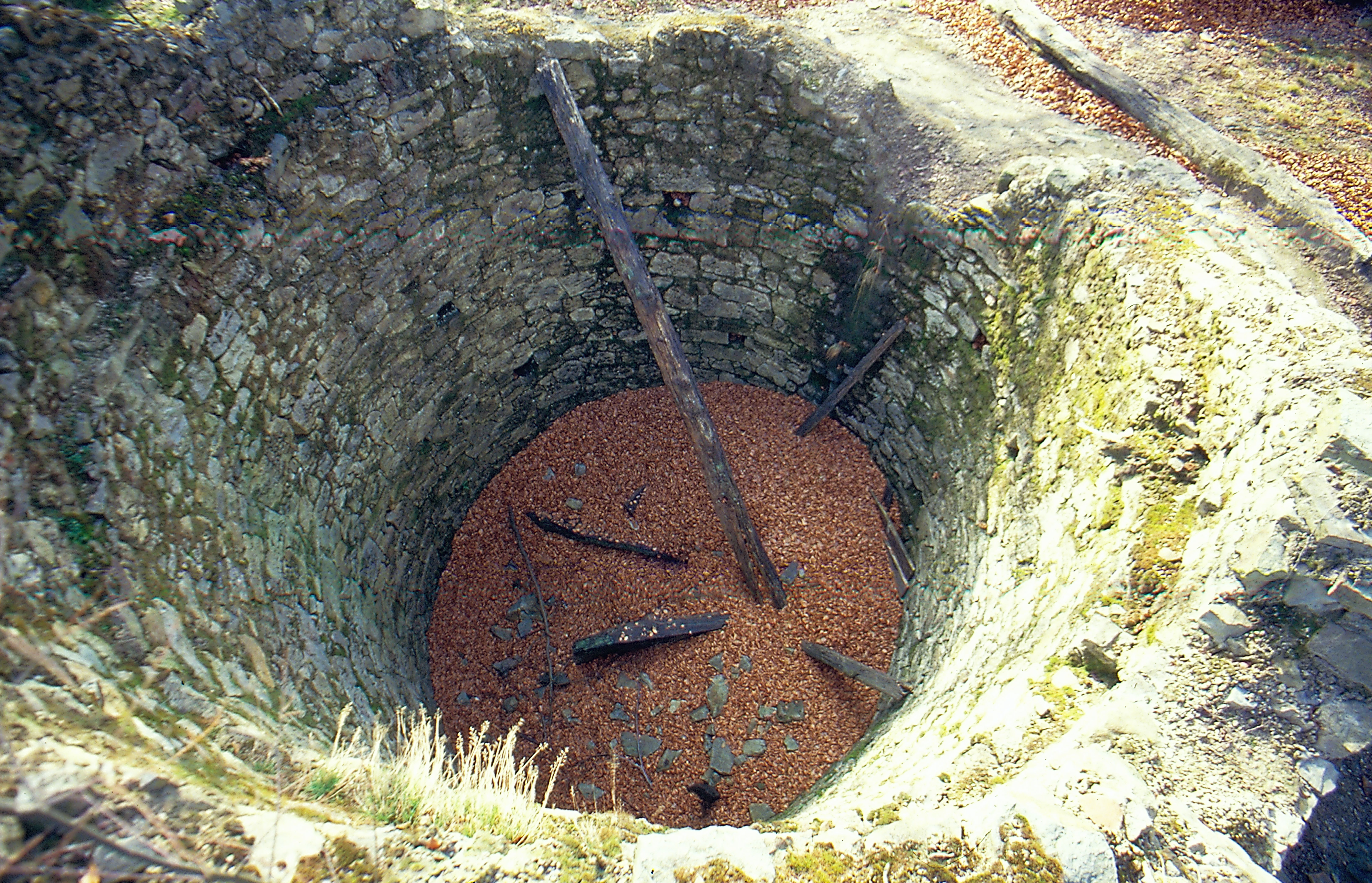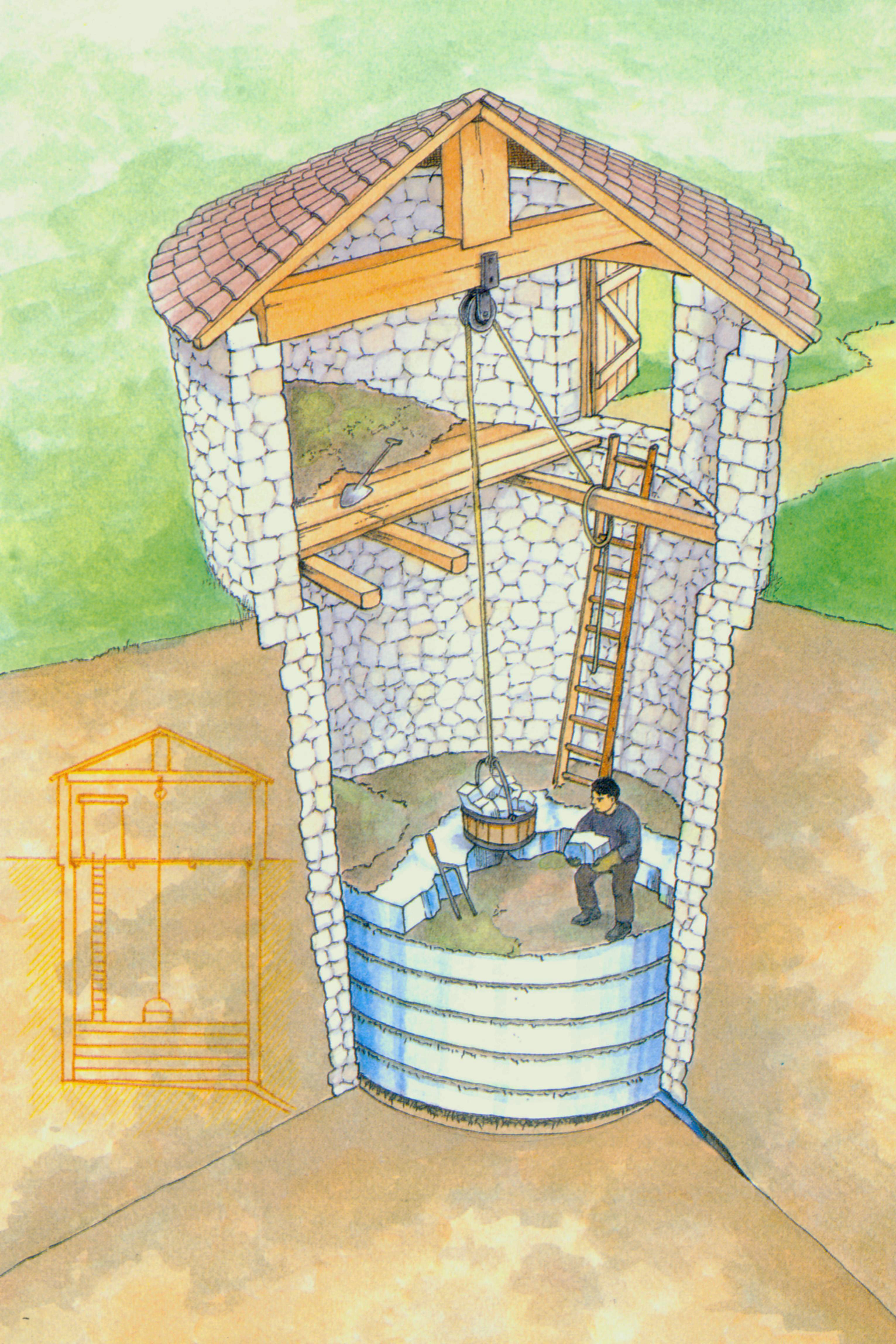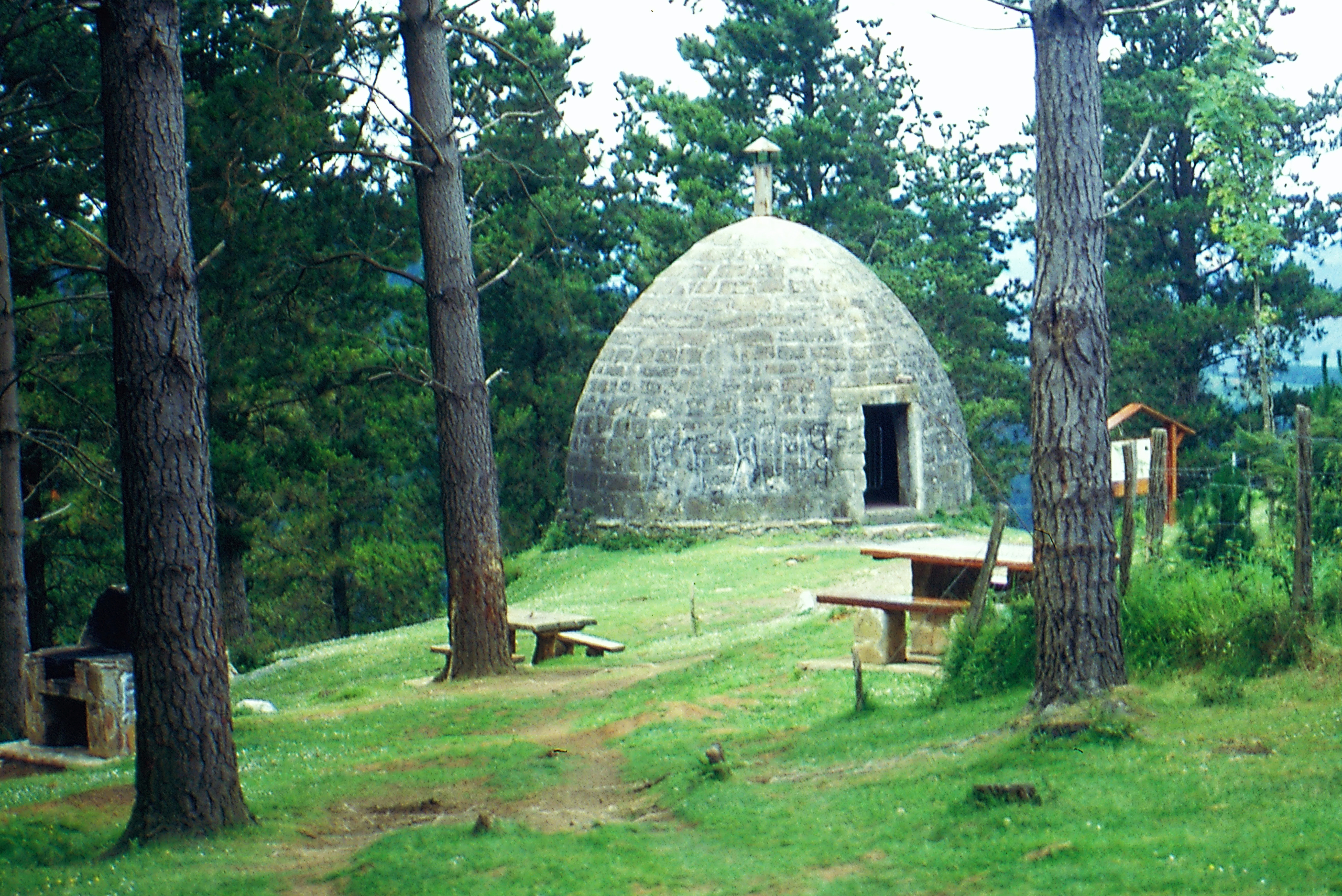Basque ethnography at a glance

Ruins of a snow pit in Astikurutz (Otxandio), 1993. José Ignacio García Muñoz. Labayru Fundazioa Photographic Archive.
Underground pits in the mountains called edur-zuloak in Bizkaia Basque, neveras in Spanish, were used in days gone by for the storage and preservation of snow. They fell into disuse by the start of the 20th century, the original constructions being thus severely deteriorated and the facts about the role they played nearly forgotten.
In the year 1974 Salbidegoitia and Barinaga compiled and edited the first catalogue of snow pits in Bizkaia, which two decades later was completed by the publication mentioned below. The most recent data reveal the location of 22 snow stores, 19 of them to the south of Ibaizabal River and the remaining three in the vicinity of Mount Oiz.
There were five in the Pagasarri-Ganekogorta massif, one in Ordunte, two in Sierra Salvada, four in Mount Gorbeia, seven across the mountains in the region of Durango, and three in the Oiz massif. The pits were located within city limits or close by in order to supply the local population with snow.

Ideal reconstruction of a type of icehouse. Jesús María Juaristi. Labayru Fundazioa Photographic Archive.
The most common type of icehouse in Bizkaia was a cylindrical excavation of ground with masonry walls. A shed was erected over the head of pits situated on lowland to protect the snow from inclement weather and the sun. Those built at altitudes above 800 m did not need further protection, so their head was simply covered with branches, ferns and turf. There have also been found stores in sinkholes and dolines conditioned for the purpose and to facilitate the extraction of snow or ice.
Conservation of the snow was made possible through insulation of the base of the pit with a layer of tree branches, grass and dry leaves. Harvested large snowballs were rolled into the chamber and trod on to last longer and take up less space. Ferns and dry leaves were thickly layered in between to make cutting easier. The ice was extracted using a pulley or a roller on a shaft supported by wooden beams. Stairs sometimes incorporated in the structure provided access to the site.
In former times the demand and use of snow was justified mainly on therapeutic grounds. Its commonest uses were: to reduce body temperature during febrile episodes caused by the cholera outbreak, for soothing relief in case of congestion of the brain, particularly meningitis, to stop haemorrhage, and as anti-inflammatory treatment for trauma, sprains and fractures.

Domed snow storehouse and surroundings. Neberondo (Durango), 1993. José Ignacio García Muñoz. Labayru Fundazioa Photographic Archive.
Natural snow and ice have likewise been used to chill wine and make iced beverages, lemonade, also known as garrafa, for it was prepared in a container so called, being very popular among them. Refrigeration technology to manufacture ice artificially is at the root of the decline of traditional methods of snow preservation, until in the second decade of the 20th century snow pits were abandoned and gradually fell in ruins.
Apart from the interest they arise as architectural works and snow-and-ice deposits, these early forms of cooling give us valuable clues to the routes for commercialization of fish or the calendar of popular festivities where good old lemonade and other drinks were consumed.
Segundo Oar-Arteta – Etniker Bizkaia – Etniker Euskalerria Groups
Translated by Jaione Bilbao – Language Department – Labayru Fundazioa
References for further information: Family Diet, part of the Ethnographic Atlas of the Basque Country collection and A. Manterola, G. Arregi & J.I. García. Bizkaiko elurzuloak. Neveras de Bizkaia. Bilbao, 1994.

